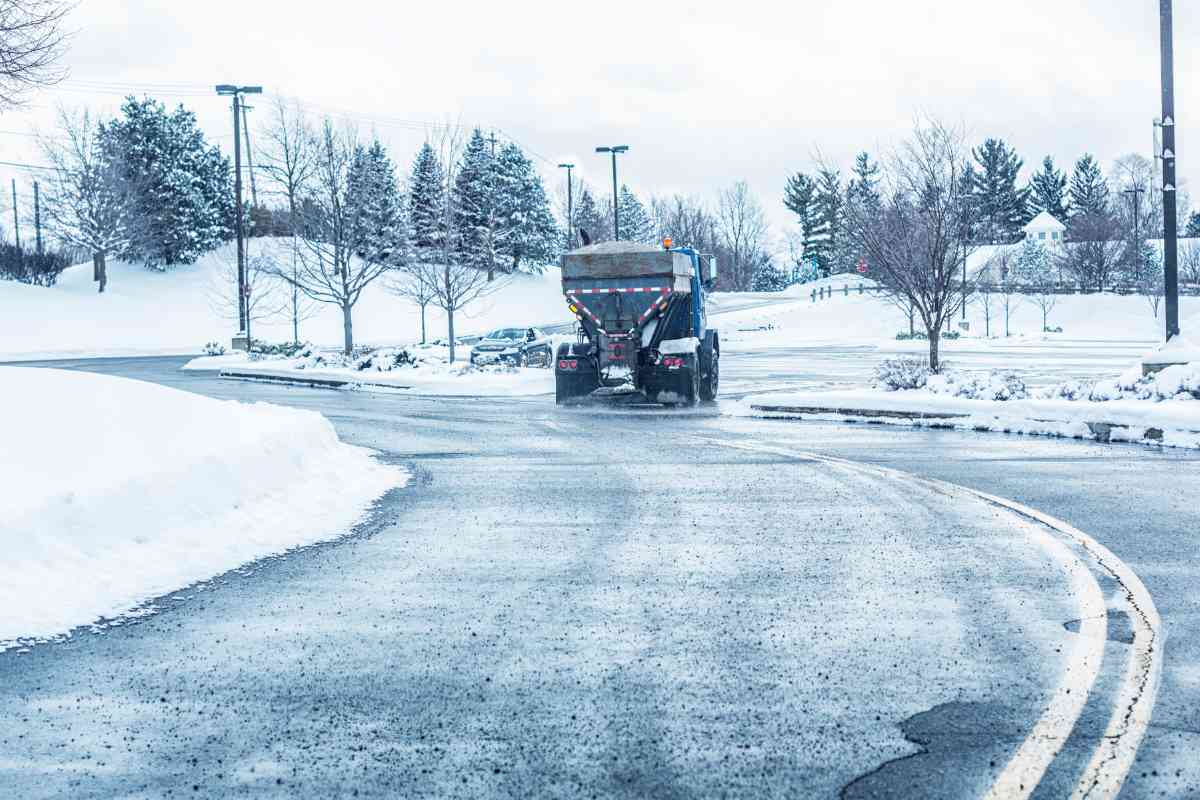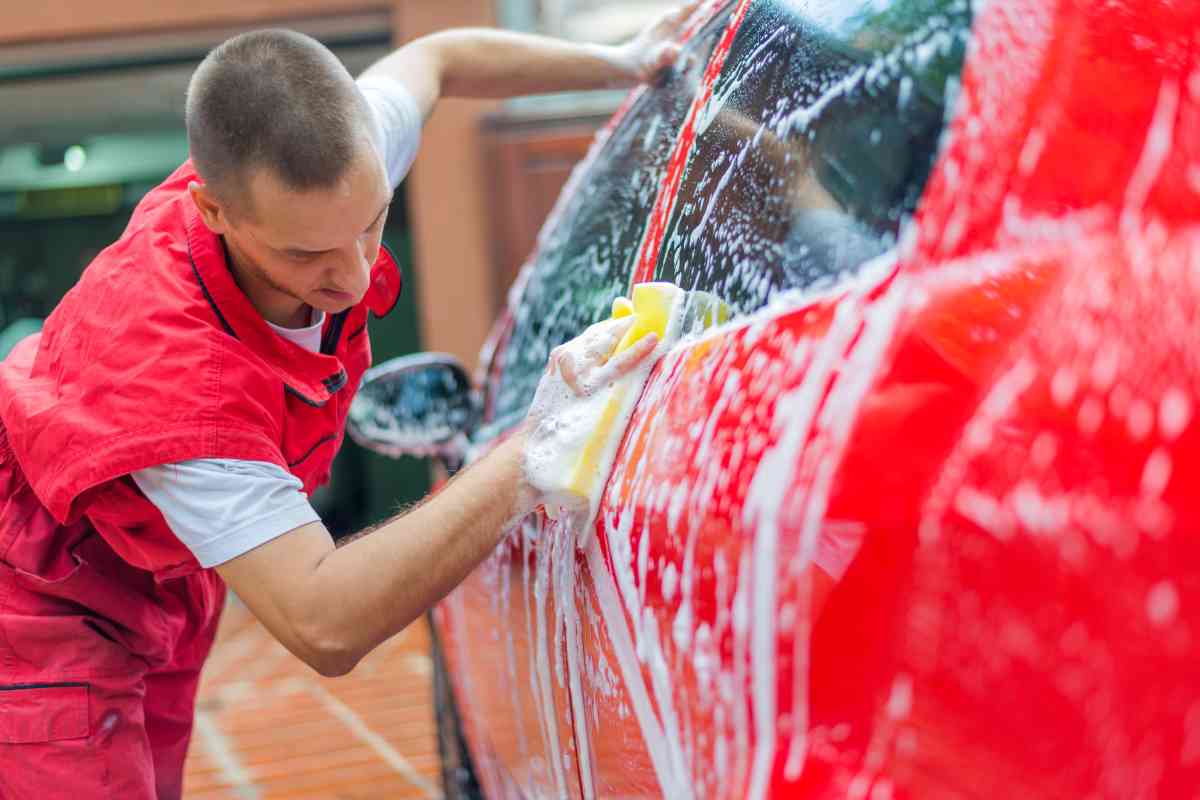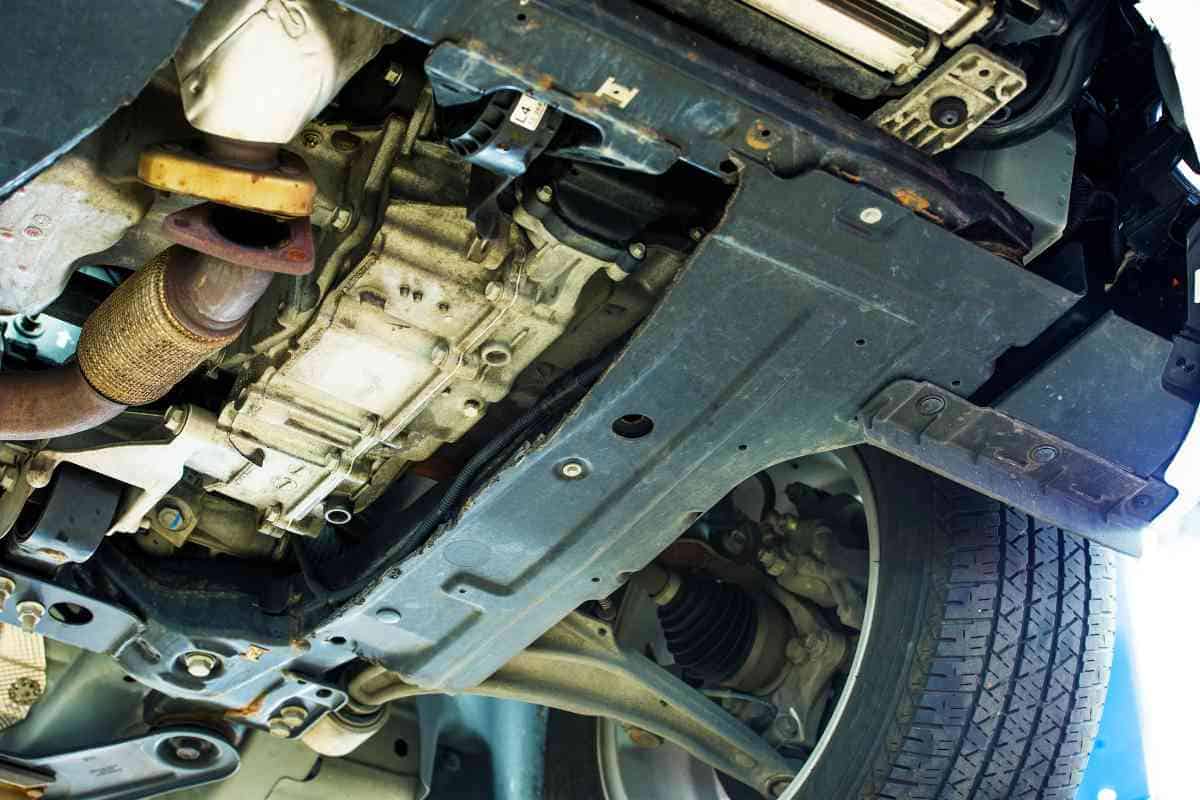Protecting Your Truck’s Undercarriage From Salt: The Ultimate Guide
You’ve seen what rust can do and you don’t want it on your truck, so you’re left wondering how to protect your truck’s undercarriage from salt.

How do you protect a truck’s undercarriage from salt?
There are a number of ways to do protect your truck’s undercarriage from salt. Regular washing, using a rust inhibitor, using a wax or sealant, installing mud flaps, protecting exposed metals, using rust resistant undercoating, and protecting your wheels are all ways to protect your truck’s undercarriage from salt.
As an auto enthusiast who lives in mountainous areas, most vehicles serviced in my area are trucks. I’ve seen the different ways people successfully and unsuccessfully protect their trucks from salt, and I can point you in the direction of the successful ones.
The Importance Of Protecting Your Truck From Salt

Protecting your truck’s undercarriage from salt is an important part of upkeep you must attend to if you value your truck. Your truck’s undercarriage is vulnerable to salt during the winter when cities layer the streets with salt in order to combat ice.
There are a number of reasons why protecting your undercarriage from salt is important.
- Salt will cause corrosion: When salt interacts with metal, corrosion occurs. This corrosion can eat away at the metal of your undercarriage making it weak and prone to failure.
- Salt will cause rust: Rust, like corrosion, can cause serious damage to your truck’s undercarriage, including structural damage, and even total failure of parts that reside in your undercarriage.
- Salt can cause paint to peel: Salt can cause paint to peel and flake off, making a vehicle look unsightly and decreasing its value.
- Salt can cause rubber and plastic components to dry out and crack: Salt can also cause rubber and plastic components on the undercarriage to dry out and crack, leading to costly repairs.
Failing to protect your truck’s undercarriage from salt will surely bring you headaches down the line regarding costly repairs, resale value, safety, and reliability.
Washing Your Truck

Washing your truck is a great way to protect your truck’s undercarriage from salt. Regular washing, or washing your truck after you’ve driven on salted roads will help protect the undercarriage.
To remove salt from your truck’s undercarriage, park your truck on a flat surface.
Before you apply soap or water, use a brush to knock any dirt or salt off the undercarriage of your truck.
Next, mix soap and water and start scrubbing. Use a high pressure hose or pressure washer and start at the front of your truck and work your way back.
Make sure to focus on the areas where you see the most dirt. Once washed, rinse the undercarriage of soap and dry it thoroughly with a clean rag.
By following these steps, you can effectively wash the undercarriage of your truck and help to protect it from salt and other corrosive materials.
Applying A Rust Inhibitor
Rust inhibitors come in many different forms. A rust inhibitor commonly comes in a can.
With the can, you can apply the rust inhibitor by spraying the inhibitor onto the surface you want to protect.
The rust inhibitor works by forming a protective coating between a metal surface and the atmosphere. The protective coating that is applied with the spray can form a layer over the metal that protects it from oxygen and moisture.
Oxygen and moisture often cause rust, so protecting your truck’s undercarriage from these elements is vital to minimizing rust.
To apply rust inhibitor to your truck’s undercarriage, first wash the undercarriage with some degreaser.
Once you have let the degreaser sit, you can let the degreaser air dry off by waiting 5-10 minutes before applying a rust inhibitor.
Next, with your rust inhibitor spray, apply the rust inhibitor in nice even coats to all of the areas you want to protect, mainly the frame and wheel wells.
You may apply two or even three coats if you’d like, but look at the instructions on the rust inhibitor’s can for the precise way to use the specific product you purchased.
Installing Mud Flaps

Mud Flaps are pieces of material that are attached to the bottom of a vehicle near the wheels. The purpose of mudflaps is to minimize the amount of debris kicked up by your vehicle’s tires.
With trucks especially, lots of debris, specifically salt, can be flung into the wheel wells and into small crevices in your truck’s undercarriage.
This salt can come in contact with metal parts on your truck and cause rust on corrosion. With mudflaps, the debris hits the flap attached to the rear of a tire, and falls back to the ground.
Mud flaps are sort of like a debris blocker for the road. As well, mud blockers improve visibility for other driver’s on the road since less rain, salt, and snow is kicked up onto another vehicle’s windshield.
If you value your vehicle’s undercarriage, and wish to protect it from salt, rust and corrosion, invest in a small set of mudflaps for your truck.
They add a sporty look to some makes and models, and are a relatively inexpensive solution to a problem that could cost you thousands in the future.
Protecting Your Wheels
Protecting your wheels from salt can play a major part in saving your undercarriage from salt.
This is because the salt that is flung up by your wheels unusually finds its way into the undercarriage, where it can cause rust and corrosion.
Salt can also cause rust directly on your wheels and corrosion on your tires. as well as your undercarriage.
This is very harmful to your vehicle, it’s safety, it’s maintainability, and it’s resale value. So to protect your undercarriage from salt, protect your wheels.
You have a number of options to maintain your wheels and in turn, your truck’s undercarriage. The first option you have is to regularly wash your tires with soap and water.
Make sure to focus on the area between the rim and tire. Salt likes to get stuck in there and cause corrosion and rust. Another option if your wheels are steel is to paint them.
Painting your wheels adds a protective layer between the steel and salt that can potentially get onto the wheels. Make sure to take a scuff pad to any rust that’s previously on the wheel before you paint.
Any rust on the wheel has the potential to turn into more rust, therefore removing rust with a scuff pad is a good idea. Make sure to focus on both the inside and outside of the wheel when removing pre-existing rust with a scuff pad.
Apply A Undercoating
Applying an undercoating to your truck’s undercarriage is a good way to protect your truck from rust and corrosion. Lanolin works in many ways, but one way is by removing any previous moisture on the metal before your application.
This beats traditional paint because once you apply paint, any moisture gets trapped in, creating the potential for rust and corrosion to build up in your truck’s undercarriage.
That being said, Lanolin, or any petroleum based undercoating removes moisture and protects your undercarriage.
Another benefit of Lanolin is that it self heals, meaning if the application layer of the Lanolin chips, it will move in to fill the gaps instead of leaving a hole or gap in the layer.
Lanolin moves to fill in the gap. To apply Lanolin or another type of undercoating, make sure to prep the vehicle by removing any existing rust first with a wire brush.
The product you choose to spray needs to be in contact with the good metal in order for it to work correctly.
So remove any loose bubbling paint, flaky rust, or anything like that. With the vehicle prepped it’s time to spray. Start with the internal cavity sprayer and spray into the holes and tight crevices of the vehicle.
These are going to be the most difficult areas to get. Next, take the cavity sprayer off, and spray the large areas of metal.
Once you have the truck’s undercarriage totally covered, you are done. But make sure to follow manufacturers recommendations first.
Key Takeaways
- There are many different ways to protect your truck’s undercarriage from salt.
- Washing your truck is a great and easy way to protect your truck’s undercarriage.
- A rust inhibitor protects a vehicle’s undercarriage from moisture and oxygen.
- Mud flaps protect your vehicle and increase visibility on the road during storms.
- Undercoating removes moisture that’s already on the vehicle.
